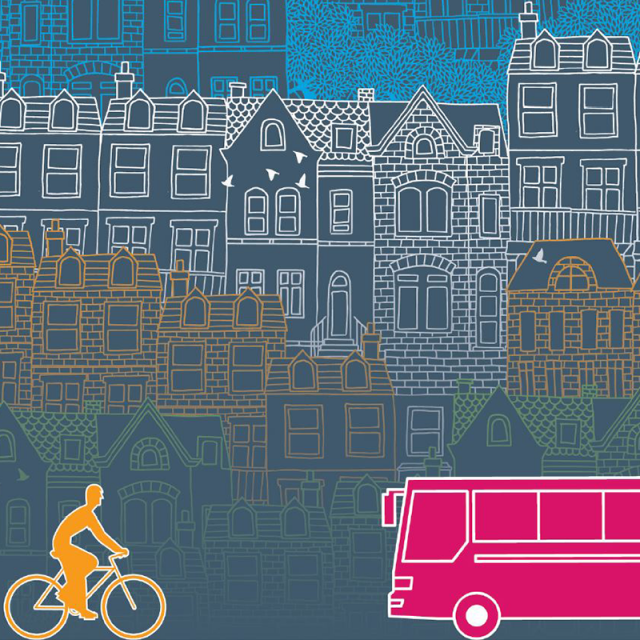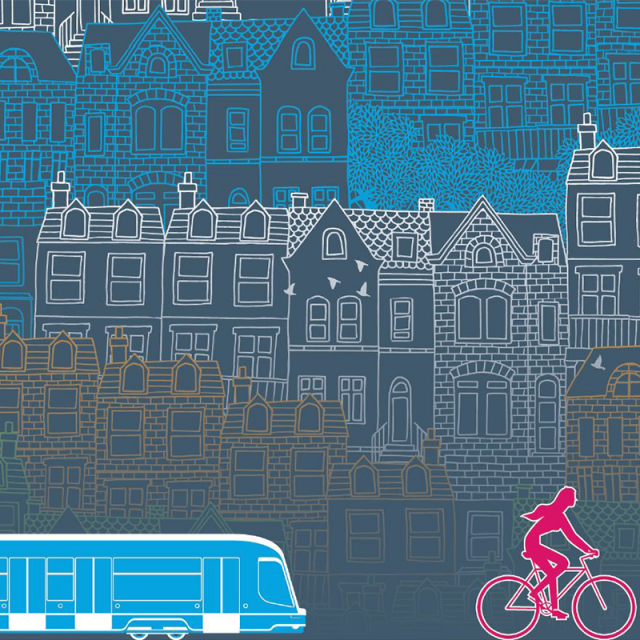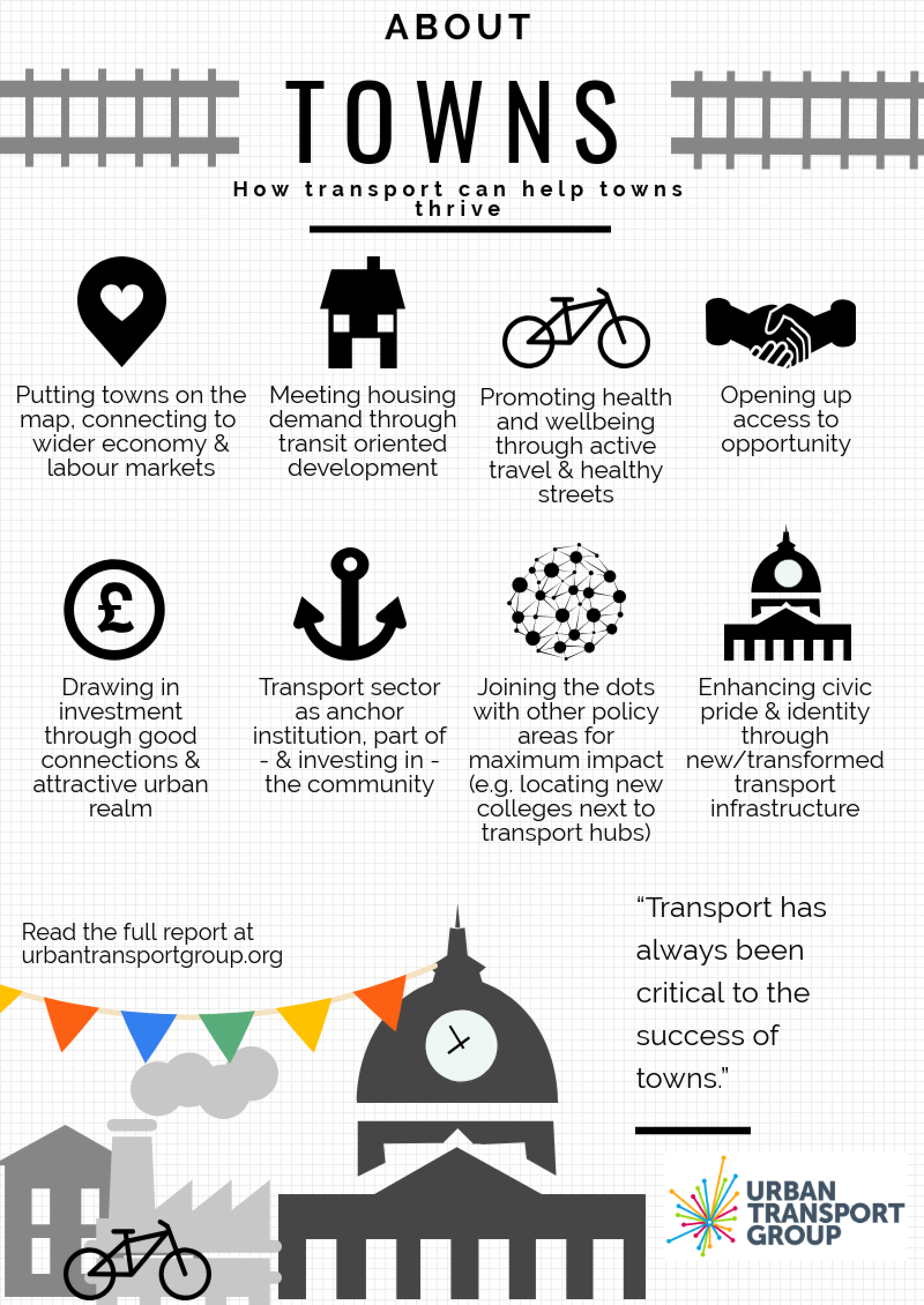About towns
Discover how transport can make a positive contribution to making the next chapter in the proud story of our post-industrial towns an exciting one.
This report examines the key role that transport interventions can play in supporting post-industrial towns.
It features case studies from the UK and the wider world of how different types of interventions - from transport’s role as an ‘anchor institution’ for local economies and as an employer, through to how transport interchanges can act as ‘gateways’ and sources of civic pride and renewal - can achieve results.
A key finding of the report is that isolated capital interventions in transport infrastructure are insufficient in themselves. Instead, more co-ordinated programmes of transport capital and revenue investment and support are needed if towns are to truly thrive.
Transport can shape the way towns look and how their residents feel about them – renewing a sense of civic pride through better and healthier streets, and high quality transport infrastructure such as stations and interchanges.

A critical theme of the report is the need for transport strategy to combine effectively with other strategies for inclusive growth.
Towns that have transformed their fortunes have not done so overnight, rather through a series of measures taken in an overall approach over years or decades. The role that transport can play in this, when joined up with economic development, spatial planning, and the health and skills sectors, is a fundamental one.

One-off investments in flagship, capital transport projects, are not enough alone for towns to truly succeed. Instead, investment must be integrated with other initiatives in areas such as education, housing and economic development.
We need to move away from a ‘silver bullet’ approach based on a single transport solution and instead towards packages of transport measures combined with wider cross-sector initiatives on housing, employment and education. Only then can transport make its mark in reversing the fortunes of our post-industrial towns.

Transport has an important role to play in tackling the challenges towns face
Low wages and in-work poverty
– Opening up access to employment and training opportunities.
– Offering affordable fares.
– Being an exemplary employer offering high quality job opportunities with career progression and paying the living wage.
Unemployment and lack of resilience in local economies
As above, plus:
– Offering personalised journey planning and advice to broaden travel horizons and help people widen their job search net.
– Providing free or discounted travel tickets for jobseekers. – Investing in transport infrastructure to attract inward investment and jobs.
Low educational attainment and skill levels
– Opening up access to education and training opportunities. – Offering affordable fares to reach these opportunities.
– Being an exemplary employer offering jobs with training.
Low productivity
– Encouraging agglomeration economies.
– Providing access to customers and qualified staff.
– Infrastructure spending – research shows that there is at least a 0.14% increase in productivity for every 1% increase in public infrastructure spending.
– Enabling opportunities to make productive use of journey to work by working on the bus or train. – Promoting healthy lifestyles through walking, cycling and using public transport, with the potential to reduce sick days and improve productivity.
Difficulties in attracting new enterprises and perception of being left behind
– Creating attractive places for investment in retail, services and entertainment.
– Changing perceptions of towns and promoting civic pride with high quality transport infrastructure and services.
– Investing in transport infrastructure to demonstrate commitment to towns, offering confidence to communities and investors.
Hollowing out of high streets
– Connecting people to local high streets
– more people access the high street by bus than by any other mode. 40% of shoppers access the high street by bus, compared to 30% by car.
– Cutting congestion in towns through public transport, walking and cycling, making them more attractive places to be.
– Forming part of a coordinated package of urban realm improvements including attractive infrastructure for walking and cycling and the creation of places that people want to spend time in
Under investment in infrastructure and housing stock
– Investing in high quality transport infrastructure that becomes a gateway to the town and an attractive destination in itself, doubling as a community hub.
– Widening the catchment area of towns, making more land available for house building and making those developments attractive to potential residents by keeping them in easy reach of the amenities of the town centre.
Ageing populations
– Providing the transport links that enable older people to play an active part in the community.
– Acting as a catalyst for inward investment and job creation within towns.
– Providing efficient access from towns to other employment and education hubs, encouraging young people and young professionals to stay in the area.
The report shows there are many positive examples of how transport initiatives can help towns maximise their potential and change for the better.
It sets out ideas, questions and pointers designed to help those involved in thinking about what transport policies and programmes might work best in helping a town to thrive.

Further reading
Report
The place to be: How transit oriented development can support good growth in the city regions
Consultation response

